Thursday, April 15, 2021
Le printemps est de retour et avec lui, le beau temps et la douceur. Ce changement de saison nous permet de prendre un nouveau départ après les difficiles mois d’hiver. Pour débuter la belle saison dans les meilleures conditions possibles, voici nos conseils et astuces pour veiller au bien-être de votre cheval.
Le printemps, par définition première saison de l’année, est synonyme de renaissance : les prés verdissent et les végétaux fleurissent. Donc à vos mouchoirs, c’est l’époque du pollen et les chevaux aussi y sont sensibles, et d’autant plus lorsqu’ils souffrent de pathologies comme l’emphysème par exemple.
Malheureusement, ce changement de climat rime aussi avec insecte. Il ne faut pas négliger les effets néfastes de ces tiques, mouches et autres taons sur l’état de forme global de nos chevaux.
Parce que ce que l’on aime aussi en cette saison, c’est de pouvoir à nouveau observer nos chevaux brouter les sabots dans l’herbe. Si certains seront ravis car déjà lassés de l’alimentation sèche, quelques précautions sont à prendre pour éviter une transition trop brutale qui pourrait troubler le bien-être et la santé de votre cheval.
Pour finir, on s’attardera au soleil pour un grand pansage de printemps et vous donner nos meilleurs conseils pour l’entretien de la crinière de votre cheval.
Mais tout de suite, en ce changement de saison, c’est le moment parfait pour une visite médicale complète. On vous dit tout sur le dentiste équin ! Est-il aussi redouté par les chevaux que les cavaliers ?
Les techniciens dentaires équins ne sont pas vétérinaires. Ils n’ont donc pas le droit de pratiquer d’anesthésie par exemple. Mais cela ne l’empêche pas de pouvoir soigner légalement nos chevaux, ils ne peuvent simplement pas leur donner de substances médicamenteuses.
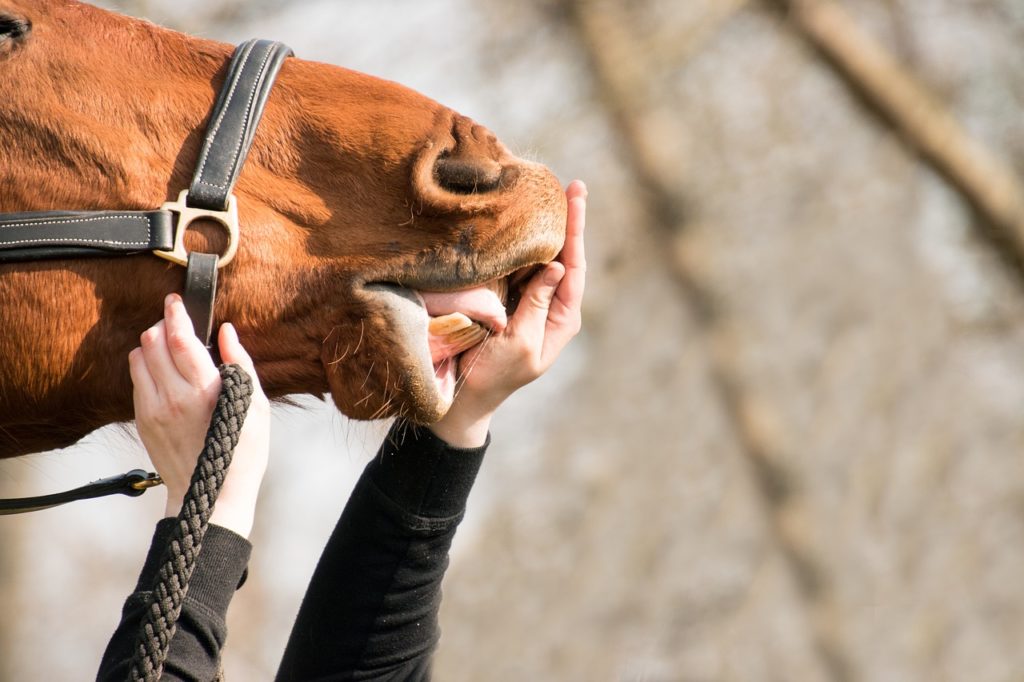
Les dents définitives des chevaux poussent tout au long de leur vie. La pousse des dents est, en milieu naturel, compensée par la mastication qui provoque l’usure de la dentition et donc, régule leur taille.
Pourtant, aujourd’hui le régime alimentaire et le mode de vie de nos compagnons ont changés et l’usure des dents ne se fait plus de la même manière.
L’émail des dents est moins usé par l’abrasivité de l’herbe ou la dureté de branches par exemple, et c’est là qu’apparaissent les surdents. Souvent très coupantes, elles sont responsables de blessures à la langue ou dans les joues plus ou moins importantes mais toutes aussi gênantes.
Le dentiste équin pourra intervenir en polissant cette zone gênante de la dent. Il pourra utiliser aussi bien une fraise diamantée rotative qu’une simple râpe pour arrondir la dent et corriger sa forme.
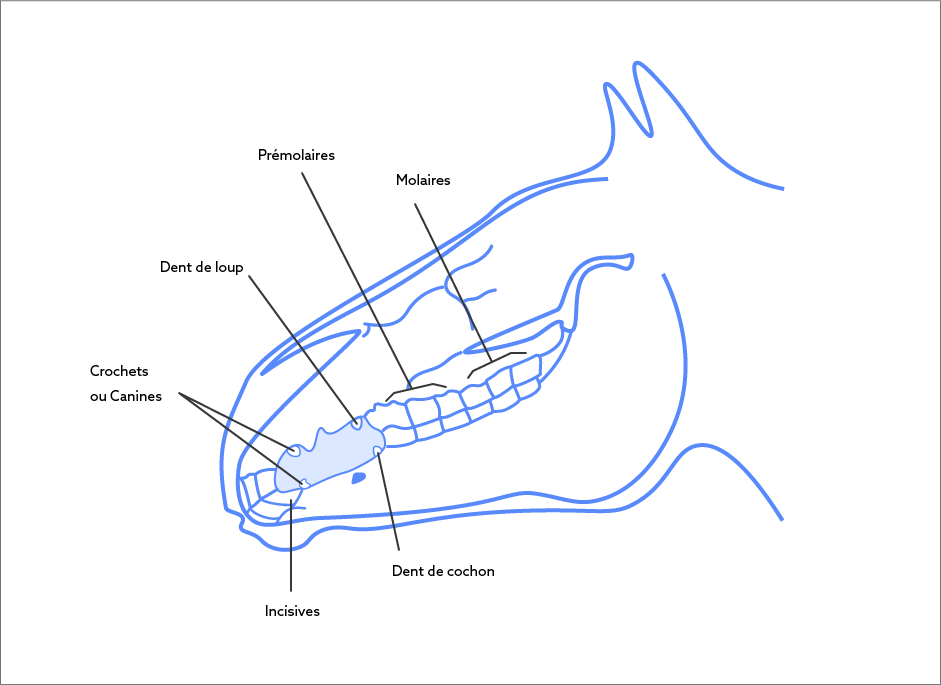
Les dents de loup ne poussent pas chez tous les chevaux. Elles se trouvent juste devant la première prémolaire de la mâchoire supérieure. Les dents de cochon elles, sur la mâchoire inférieure.
Ces petites dents pourraient ne poser aucun problème aux chevaux si elles ne se trouvaient pas pile au niveau du siège du mors. Celui-ci aura donc tendance à frotter et cogner contre les dents de loup ou de cochon provoquant ainsi de fortes douleurs dans la bouche.
Il arrive souvent qu’en réponse à cette gêne, le cheval compense et finisse par rencontrer des problèmes ostéopathiques comme des boiteries. C’est pour cette raison que les visites dentiste et ostéopathe vont souvent de pair.
Pour soulager le cheval au travail, il sera indispensable d’extraire la dent gênante. Cette intervention est assez fréquente et les techniciens dentaires la maitrisent parfaitement. Deux semaines de repos pour permettre à la gencive de cicatriser correctement et le travail pourra reprendre sans douleur.
Les problèmes dentaires chez le cheval peuvent être difficiles à identifier, étant donné qu’il est difficile d’inspecter la bouche de son cheval sans matériel. Différents signaux peuvent vous alerter et ainsi faire vous penser à prendre rendez-vous chez le dentiste.
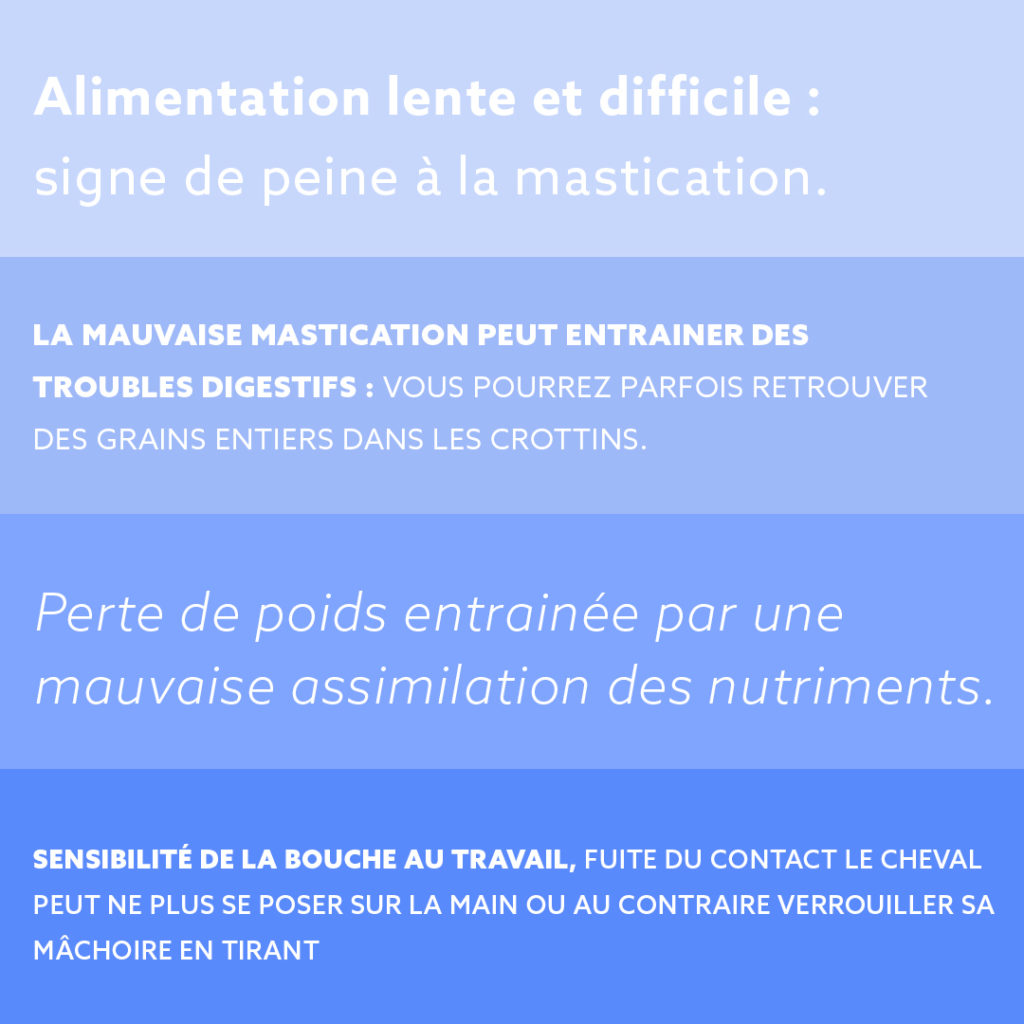
Le mode de vie d’un cheval va déterminer ses besoins en visite chez le dentiste. Par exemple, un cheval au pré se contentera d’une visite annuelle alors d’un cheval en box préfèrera consulter son dentiste deux fois par an.
Si les visites médicales nous permettent de prévenir le développement de quelques maux, certaines pathologies chroniques peuvent être accentuée par les changements de saison et surtout au retour du printemps, par exemple l’emphysème.
L’emphysème équin se traduit par une circulation de l’air dans les poumons difficile et une réduction du volume des voies respiratoires. C’est l’action d’expiration qui est la plus affectée par l’emphysème. Les chevaux se voient obligés de fournir un effort supplémentaire pour expirer l’air de leurs poumons.
Cette inflammation est provoquée par la présence d’allergènes comme le pollen, les moisissures ou la poussière par exemple.
On entend souvent parler de l’emphysème saisonnier car l’emphysème est une maladie chronique. C’est-à-dire que ces symptômes ne seront pas toujours présents mais apparaitront lors de certaines périodes de l’année ou de certains évènements par exemple.
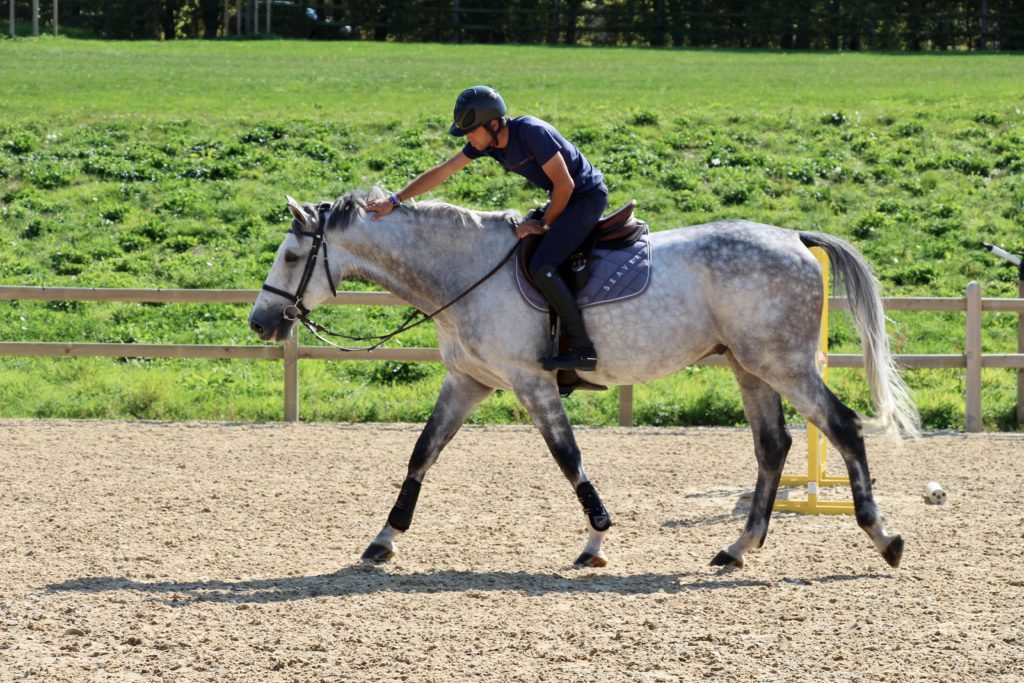
Les symptômes de l’emphysème sont nombreux : toux au début de l’entrainement et parfois même au repos.
La toux peut être accompagnée de rejets de mucus, mais pas systématiquement. Le principal indicateur de la maladie est la difficulté respiratoire. Attention, une toux n’est pas toujours due à de l’emphysème.
En cas d’emphysème, la respiration devient bruyante, accompagnée de sifflements ou de crépitements (votre vétérinaire saura les identifier).
Ces sons très caractéristiques de l’emphysème permettent de l’identifier facilement. Cependant, le diagnostic le plus fiable reste le lavage broncho-alvéolaire. Ce test sera effectué par votre vétérinaire et grâce à celui-ci, il saura déterminer l’ampleur de la maladie.
L’emphysème n’est pas une fin en soi, il existe des traitements symptomatiques et de bonnes habitudes à prendre pour soulager presque complètement votre compagnon.
Le foin est une des principales sources de poussières et moisissures dans l’environnement du cheval. Il faudra toujours veiller à lui donner un foin d’excellente qualité. Afin de se débarrasser des poussières, vous pourrez aussi tremper votre foin, pour rincer les particules de poussières.
Dans l’idéal un cheval sensible vivra au pré. D’abord parce qu’il se nourrira principalement d’herbe bien fraiche laquelle ne pourra pas irriter ses poumons, et aussi car dehors, l’air est plus respirable et plus propre que dans un endroit clos.
Adios les box paillés. A défaut de vivre au pré, il faudra un box tapissé de copeaux, beaucoup moins sources de poussière et autre microparticules nocives que la paille.
Les lieux de vie de votre compagnon devront toujours être très propres. Il est important de ramasser les crottins le plus souvent possible, pour éviter les gaz irritants qui s’en émanent.
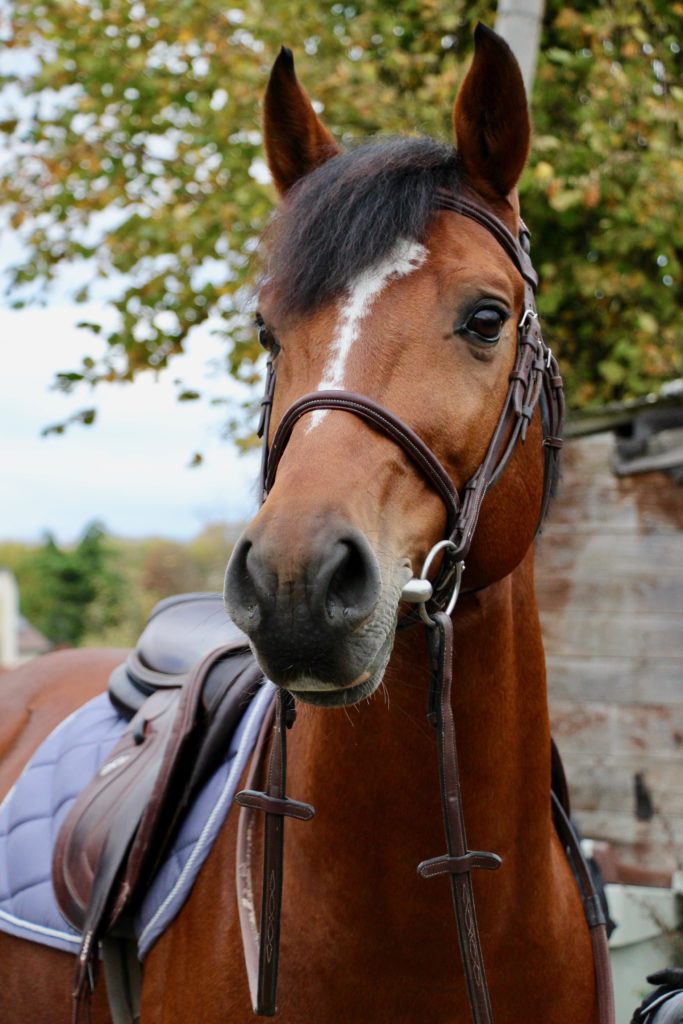
Pour préserver un cheval sensible, il faudra penser à éviter les manèges. Comme dans tous les lieux couverts, les particules de poussières ne s’y évacuent pas facilement.
Choisir de travailler son cheval en carrière est la meilleure chose à faire, mais le sol en sable reste néfaste pour la bonne respiration des chevaux. Surtout en périodes estivales, il sera alors important de veillez à bien arroser la carrière.
Des solutions naturelles existent. Plantes séchées ajoutées à la ration comme les jeunes orties par exemple pourront calmer une toux légère.
Vous pouvez aussi sélectionner un panel d’huiles essentielles. Mais attention, toutes les huiles essentielles ne conviennent pas aux équidés avec des difficultés respiratoires et le dosage doit être respecté strictement. Demandez conseil à un professionnel de santé avant de les utiliser. Bien maitrisées, les huiles essentielles peuvent être très efficaces.
Si le changement de saison n’est pas toujours une bonne nouvelle pour les chevaux sensibles, le printemps s’accompagne aussi de petits parasites qui, en plus d’être agaçants, peuvent être porteurs de maladies.
Même si les insectes sont des acteurs majeurs dans la préservation de l’écosystème, nous préférons tout le même les savoir loin de nos chevaux et de nos écuries.
La prolifération d’insectes dans les écuries ou sur le lieu de vie de nos chevaux peuvent provoquer un mal-être aussi bien physique que psychologique pour les équidés.
En effet, la sollicitation constante des mouches près des muqueuses, leur bourdonnement génèrent un inconfort considérable tout au long de la journée. Les piqures d’insectes et les démangeaisons qui les accompagnent sont aussi désagréables pour eux que pour nous.
Tous ces points peuvent très facilement rendre un cheval anxieux, aussi bien lors des séances de travail qu’au repos. Pouvant mener jusqu’à un sentiment d’insécurité, on remarque parfois des réductions d’appétit entrainant une perte de poids, un important niveau de stress et une fatigue psychologique excessive pouvant affaiblir les chevaux les plus fragiles.
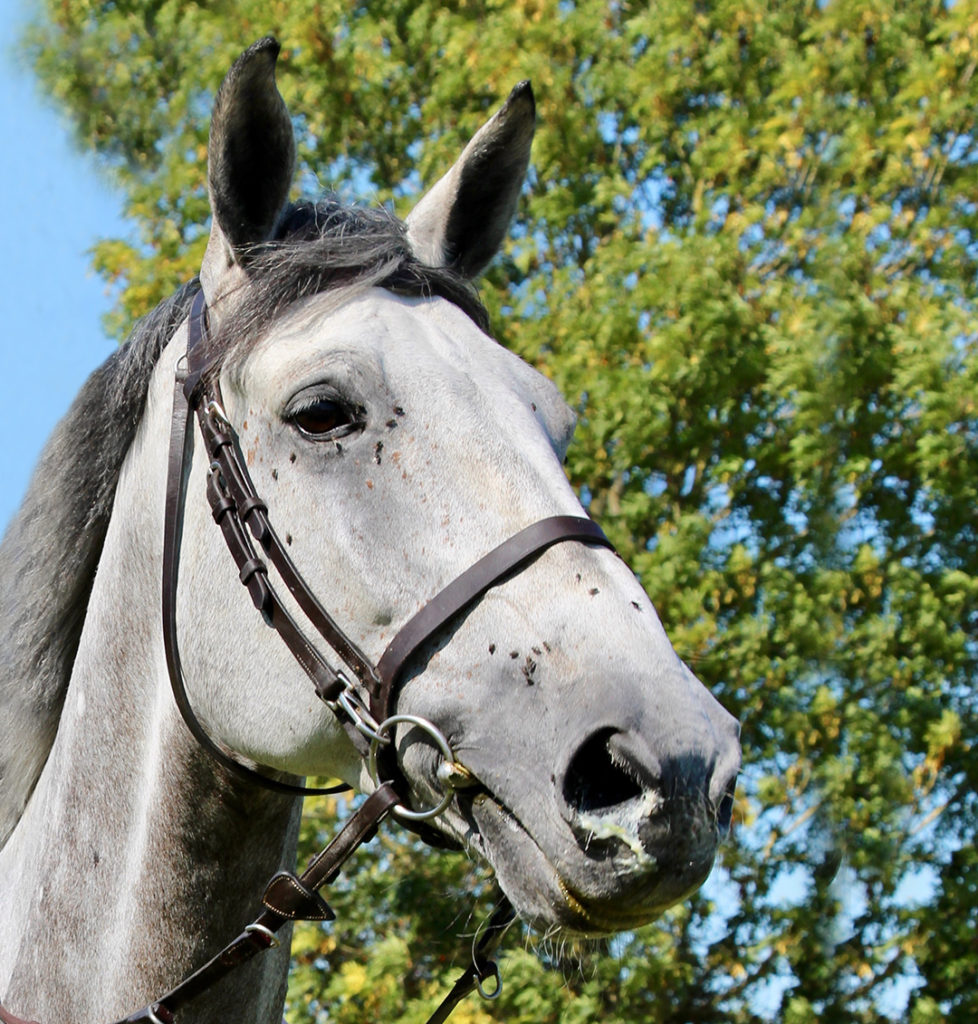
En plus de jouer sur leur bien-être psychologique, ces petites bêtes transmettent des maladies ou peuvent aggraver l’état de certaines blessures.
Un grand nombre de piqure sur le corps du cheval peut entrainer des réactions allergiques ou des maladies de peaux. Il faudra veiller à soulager au mieux les démangeaisons et empêcher le cheval de se gratter, au risque de se blesser, provoquer une infection et des problèmes de peau.
Attirés par la chaleur et les odeurs, les mouches ont souvent tendance à approcher les blessures pour s’y nourrir ou pondre, déposant ainsi toute sorte de microbes ou bactéries sur la plaie, la menaçant d’infection.
En plus d’être douloureuses, les piqures peuvent transmettre des maladies plus ou moins grave par voie sanguine telles que la maladie de Lyme, l’AIE, la conjonctivite, leptospirose et parfois des parasites intestinaux.
Même si nous pouvons agir pour protéger les chevaux de ces nuisibles, ils sont dotés d’une arme de défense naturelle : les crins. Très efficaces pour chasser les insectes voire parfois les tuer, la crinière et la queue du cheval doivent être suffisamment longues pour atteindre les moustiques et autres taons partout sur le corps du cheval. Il faudra songer à laisser de côté le style à cette saison.
Par exemple, vous pouvez ajouter une cuillère à soupe de coupeaux d’ail dans la ration du soir (on évite la poudre trop fine). Attention, malgré les nombreuses vertus de l’ail, il ne faut pas abuser des bonnes choses, une cuillère à soupe par jour mélangée à la ration pendant 10 jours suffit. Dans le commerce vous trouverez même des sauts de compléments alimentaires à lécher spécial printemps !
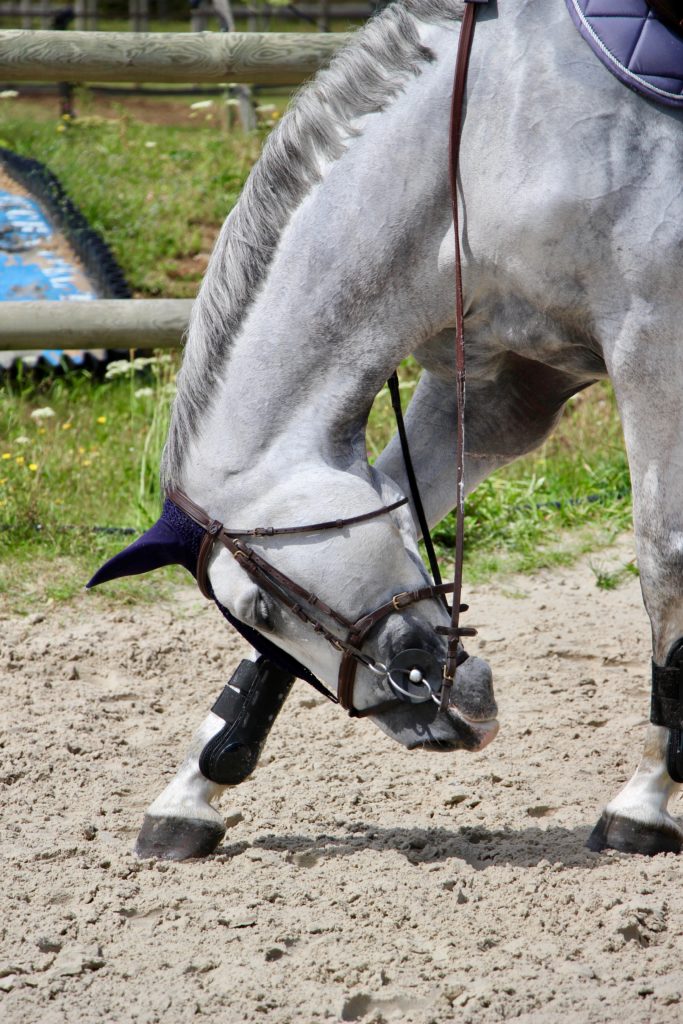
L’organisation de l’écurie est très importante, il faudra éviter les paddocks près d’une mare, d’eau stagnante, ou de la fumière par exemple, qui sont des zones adorées par les parasites volants.
Vous avez à disposition un large choix de produits répulsifs spécialement pensés pour les équidés sur le commerce. Mais vous pouvez aussi privilégier les recettes maison à base d’huiles essentielles qui, bien utilisées, sont très efficaces. Demandez conseil à un professionnel avant utilisation.
Aussi, favorisons les insectifuges aux insecticides. La préservation de l’écosystème reste primordiale. Si l’on peut éloigner ces petites bêtes de nos chevaux, pourquoi les tuer ?
Le retour des beaux jours induit le retour d’une bonne herbe bien verte. En plus de nous faire oublier les derniers mois passés dans la boue, l’herbe va constituer un changement important dans l’alimentation de votre cheval. Cet aliment semblant si banal, peut provoquer certaines pathologies graves chez le cheval si la transition ne s’est pas faite correctement.
La fourbure n’est pas exclusivement réservée aux poneys trop gourmands. Même un cheval bien entrainé et en bonne santé peut développer une fourbure aigüe.
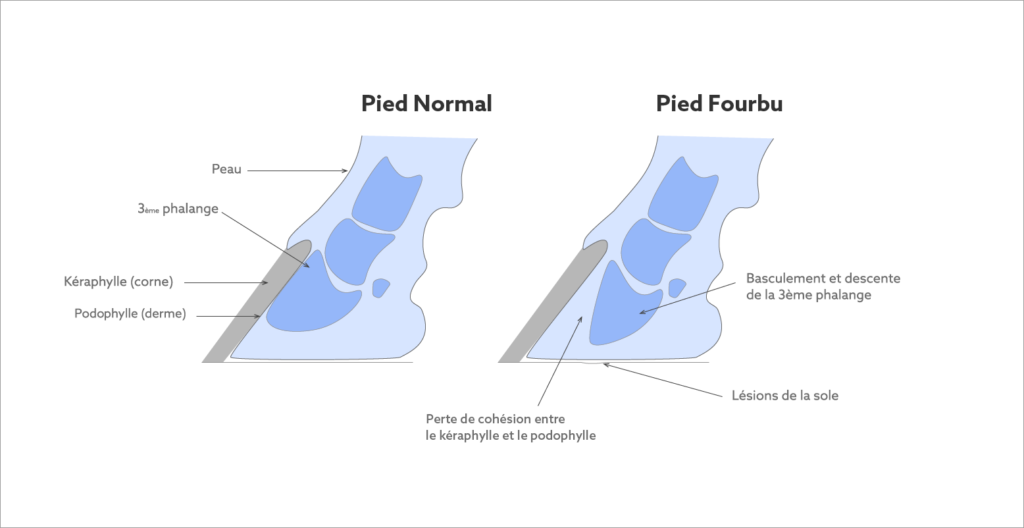
La fourbure correspond concrètement au déchaussement de la 3ème phalange du pied de votre cheval. Ce déchaussement extrêmement douloureux et dangereux est souvent causé par un changement brutal d’alimentation, passant d’une alimentation sèche et assez pauvre en sucres à une alimentation plus riche comme l’herbe de printemps.
Le seul diagnostic fiable de la fourbure est de faire des radios du pied de votre cheval. Mais avant d’alerter votre vétérinaire, vous remarquerez que :
Afin d’obtenir des données fiables sur le rythme cardiaque de votre cheval, munissez-vous de votre Ensemble CEEFIT et CEEFIT Pulse & ECG !
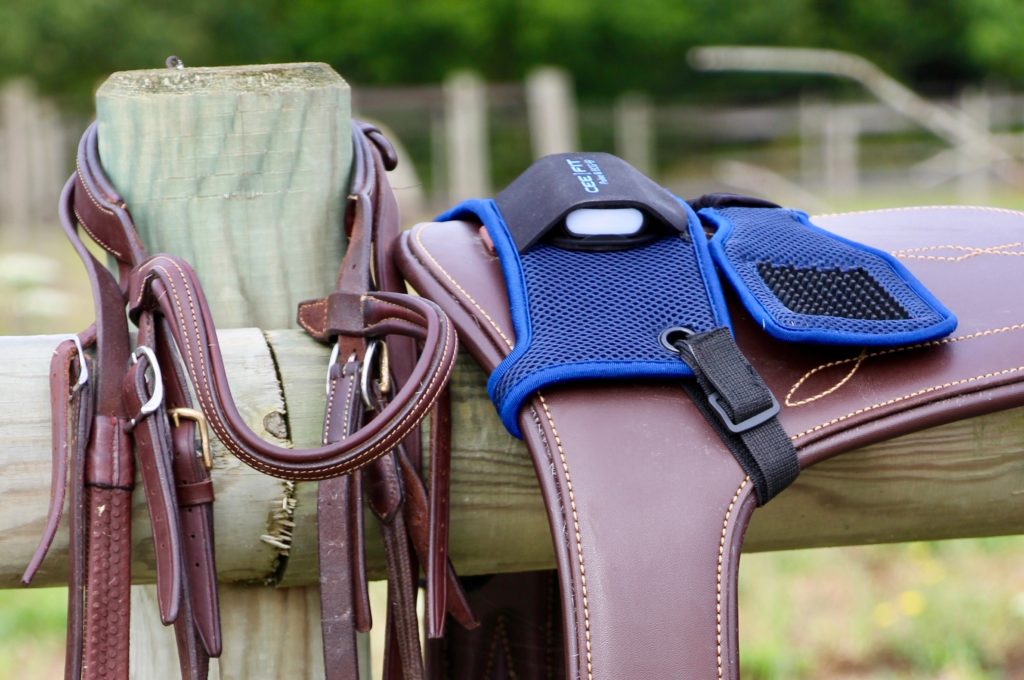
En attendant l’arrivée de votre vétérinaire, tout ce que vous pouvez faire est de limiter les déplacements de votre cheval, le laisser se reposer au box, avec une litière bien épaisse pour qu’il marche sur un sol le plus meuble possible.
A la suite de votre visite vétérinaire, prenez rendez-vous chez votre maréchal ferrant, c’est lui qui vous donnera les meilleurs outils pour soulager les pieds de votre cheval.
Si votre cheval a souffert d’une fourbure aigue, il faudra repenser son alimentation et veiller à la réguler, principalement les apports en sucre.
Le passage à l’herbe peut aussi provoquer chez le cheval des troubles digestifs comme des diarrhées ou de l’aérophagie. Mais ces petits inconforts passagers peuvent s’accompagner de pathologies plus graves comme la redoutée colique.
Lorsque votre cheval souffre de colique, il adopte un comportement très significatif. Apprendre à repérer ces attitudes vous permettra de contacter votre vétérinaire rapidement, avant que la colique ne s’aggrave.
Voici quelques signes indiquant que votre cheval souffre de colique :
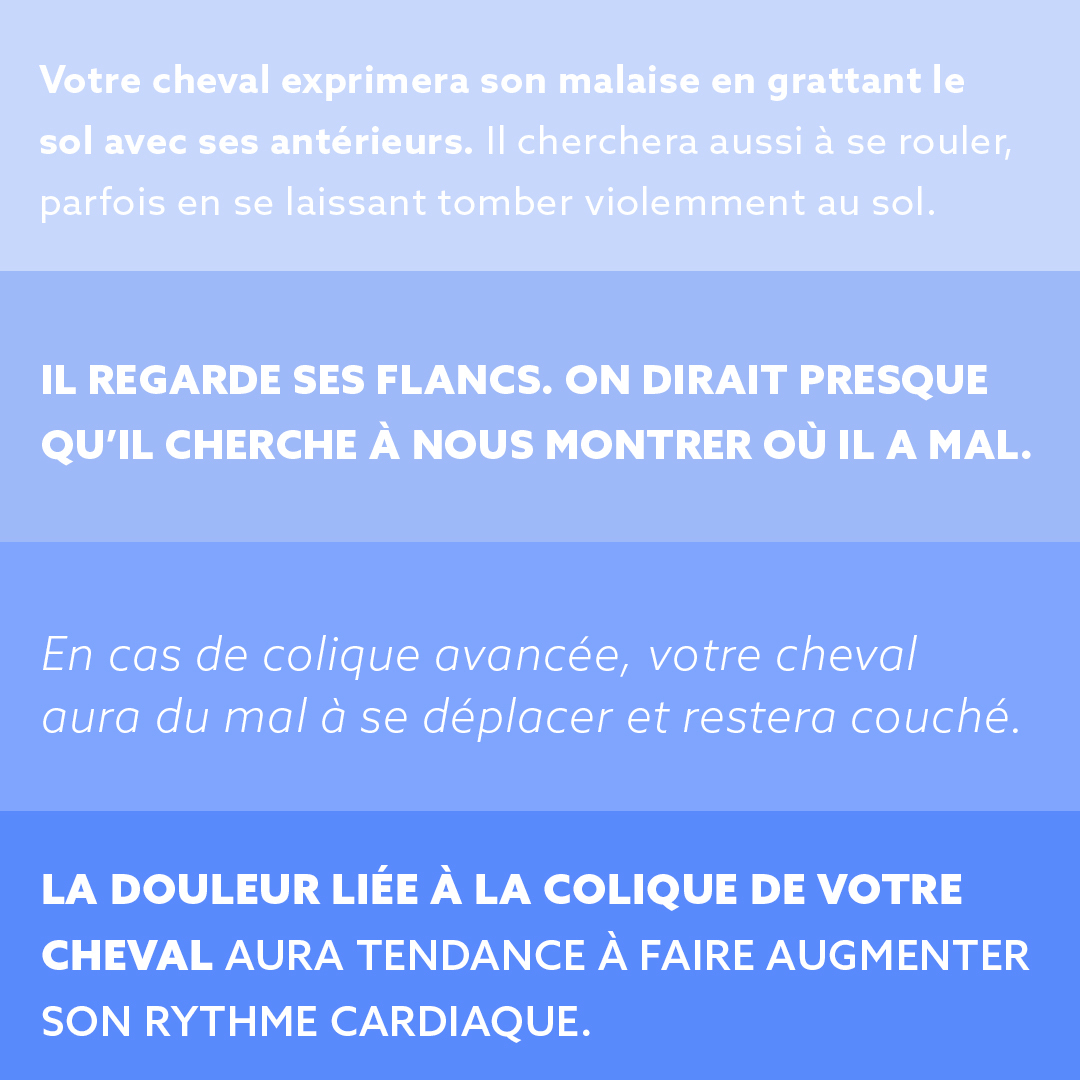
La colique est, le plus souvent, conséquence d’un bouchon dans le système digestif du cheval. Un changement d’alimentation ou une ingestion de nourriture en trop grande quantité dans un petit laps de temps mène souvent à cette pathologie. Si votre cheval souffre de colique, il pourra manquer d’appétit et bouder sa ration. Cette attitude peut aussi vous mettre la puce à l’oreille.
La colique chez le cheval peut être très grave et dans certains cas, seule une intervention chirurgicale pourra permettre à votre équidé de se rétablir. C’est pour cela qu’il est indispensable de contacter votre vétérinaire dès qu’il présente des symptômes de colique.
En attendant votre vétérinaire, la meilleure chose à faire est de faire marcher votre cheval. Le fait de se déplacer pourra aider son système digestif à se relancer et peut être évacuer le bouchon naturellement.
Afin de soulager votre compagnon, le vétérinaire pourra lui prescrire un traitement médicamenteux qui aura un effet lubrifiant et/ou laxatif pour éliminer le bouchon.
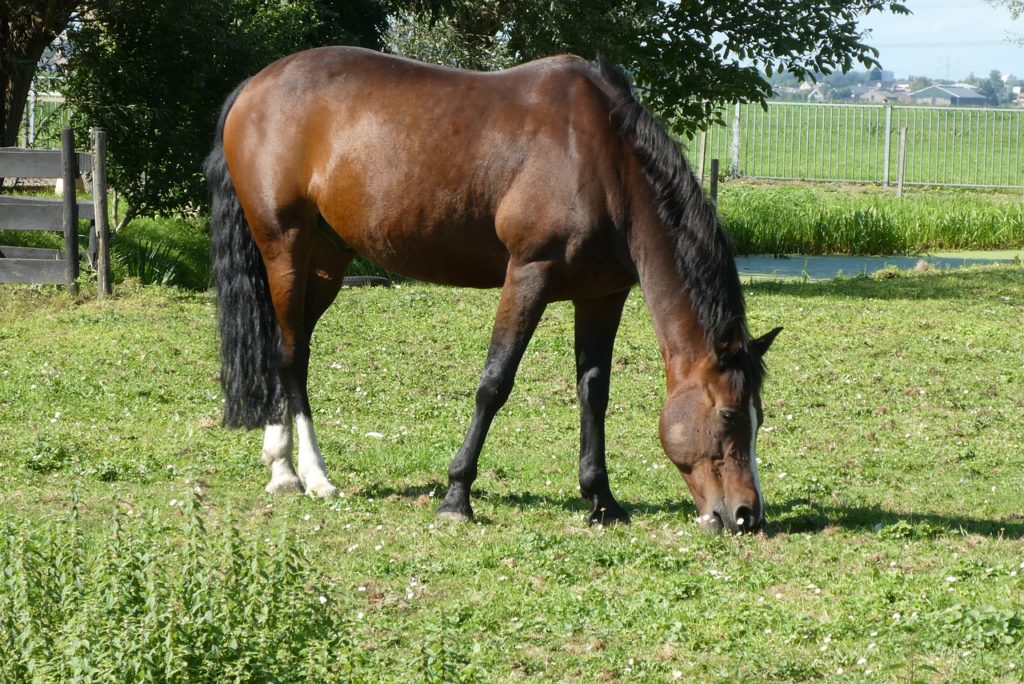
Si l’arrêt de l’activité digestive de votre cheval est souvent lié à un bouchon de nourriture, elle peut aussi être causée par un déplacement d’organe gênant le transit du cheval. Dans ces cas là le vétérinaire jugera de la gravité de la colique et une intervention chirurgicale sera certainement nécessaire.
Être attentif au comportement de votre cheval et connaitre ses habitudes permet de pouvoir détecter un mal-être rapidement. Pour cela, il faut passer du temps avec lui en dehors des entrainements pour apprendre à mieux cerner son caractère et surtout, créer un lien fort.
Pour cela, quoi de mieux que de chouchouter nos loulous au moment du pansage ? Le retour des beaux jours est le moment parfait pour se lancer dans un grand pansage de printemps.
Aujourd’hui nous avons choisi de nous attarder sur le soin des crins de votre cheval et on s’improvise coiffeur professionnel.
Et oui, dans l’art d’égaliser la crinière de notre cheval, deux écoles s’opposent.
D’une part les mordus du ciseau, qui apprécient la perfection de la technique et l’élégance du rendu et d’autre les adeptes du peigne privilégiant un résultat naturel et durable.
Même si la coupe au ciseau peut être très pratique et peut rendre un résultat très net, lorsque l’on fait face à une crinière très dense et épaisse il arrive que la coupe n’ait pas le rendu escompté. Mais c’est tout de même un remède miracle lorsque l’on coiffe un cheval qui ne tient pas en place et qui en plus se montre douillet.
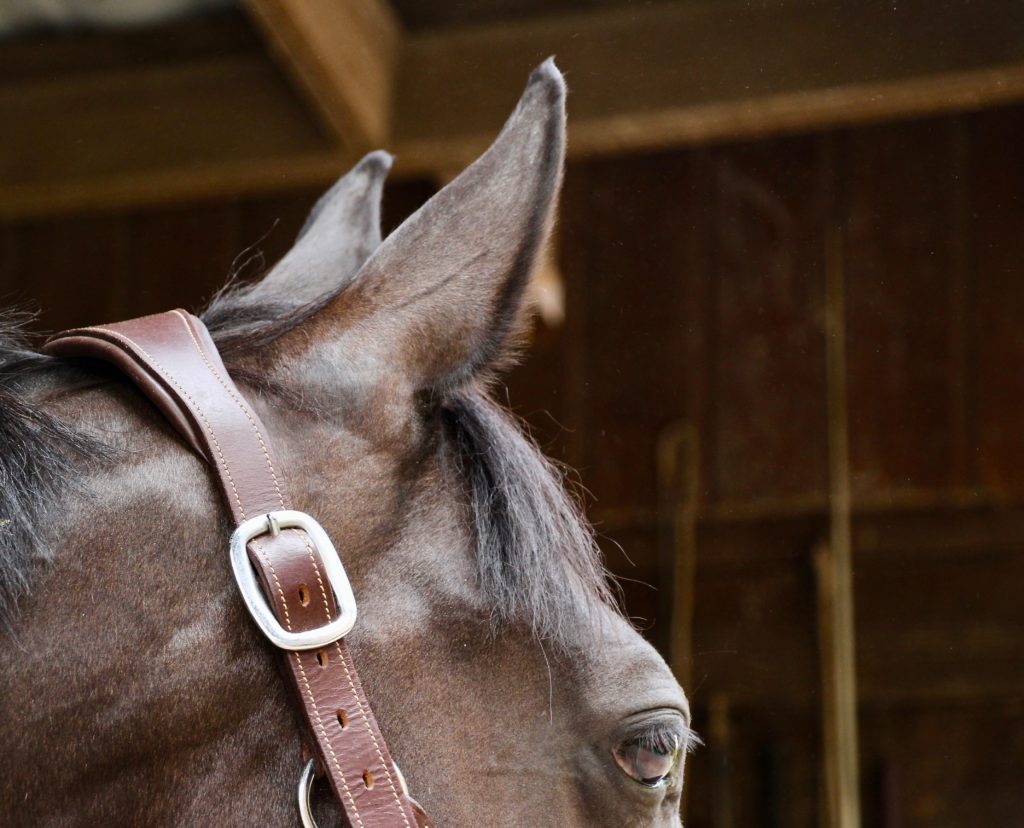
L’usage du peigne, il faut être honnête, prend souvent beaucoup de temps … et c’est tant mieux ! Visualisez-vous, au soleil, tenue estivale, et c’est parti pour une séance de coiffure-bronzage. Vous en ressortirez tous deux radieux !
L’avantage du peigne, d’abord, est que même si vous avez la tremblote, vous ne risquez pas de ruiner de longues minutes de concentration en un mauvais geste. En plus de donner un résultat naturel il permet de désépaissir la crinière, laquelle tiendra moins chaud à votre cheval en cas de hausse des températures.
Nous vous conseillons de laisser une bonne longueur de crinière à votre cheval, surtout à cette saison car elle est là aussi pour le protéger ! Elle lui permet de chasser les insectes et de réguler sa température corporelle.
Une fois la crinière bien égalisée, on n’oublie pas de reprendre la coupe de la queue de son cheval.
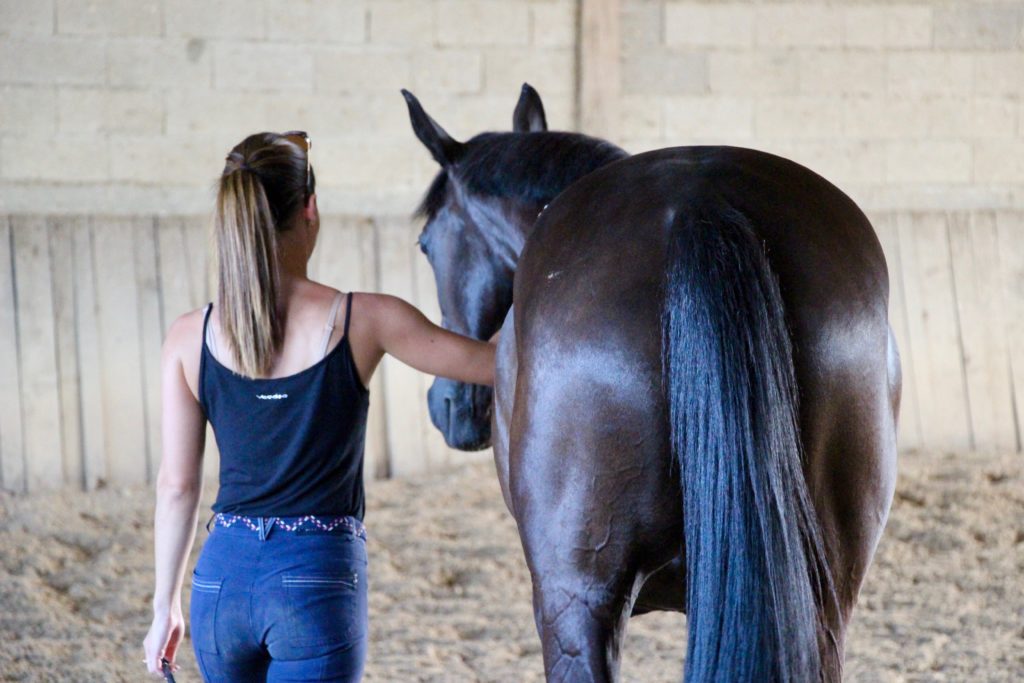
Ici, il n’y a pas de débat, on coupe juste les pointes au ciseau. Niveau longueur, on parle souvent d’un repère à mi-canon. Maintenant, selon la morphologie de votre cheval, et l’épaisseur de ses crins, on peut couper juste au niveau du boulet. Encore une fois, ces longs poils drus ne sont pas là par hasard. Arme souvent fatale pour les insectes, on privilégiera une bonne longueur pour qu’elle puisse chasser un taon par exemple quelque soit son emplacement sur le dos ou sous le ventre du cheval.
Vous pouvez maintenant peaufiner le tout en vous attardant sur des détails comme par exemple, les fanons, les indisciplinés du couard et on n’oublie pas le toupet. Aussi, les poils qui dépassent des oreilles. Attention, pour ceux-là notre petite astuce est de fermer l’oreille du cheval et de couper juste ceux qui dépassent ! Ces poils là aussi sont très importants pour protéger l’oreille des parasites.
Nous espérons que cet article vous a plu. Pour en savoir plus sur notre technologie (qui au passage, peut vous aider à obtenir une vision globale de la santé de votre cheval), cliquez ici. N’hésitez pas à faire un tour sur nos réseaux sociaux !